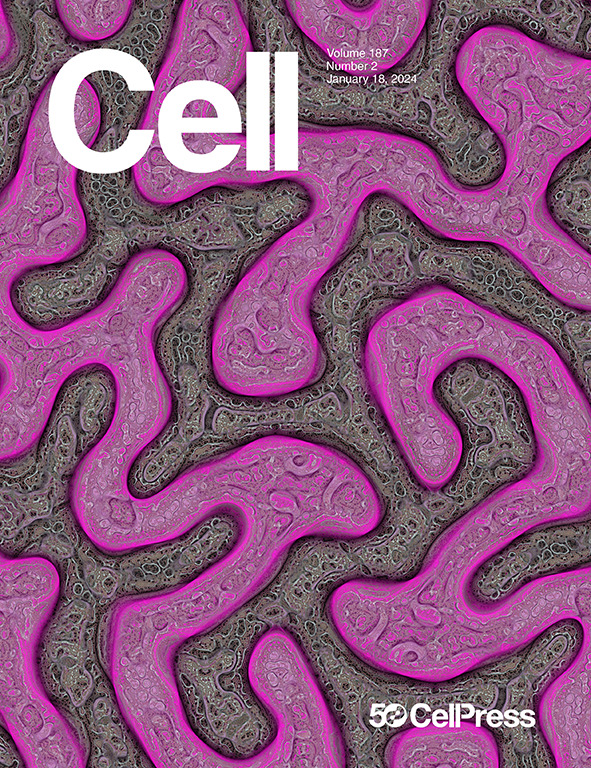A mast cell receptor mediates post-stroke brain inflammation via a dural-brain axis
IF 42.5
1区 生物学
Q1 BIOCHEMISTRY & MOLECULAR BIOLOGY
引用次数: 0
Abstract
The immune environment surrounding the brain plays a fundamental role in monitoring signs of injury. Insults, including ischemic stroke, can disrupt this balance and incite an exaggerated inflammatory response, yet the underlying mechanism remains unclear. Here, we show that the mast-cell-specific receptor Mrgprb2 regulates post-stroke brain inflammation from the meninges. Mrgprb2 causes meningeal mast cell degranulation after stroke, releasing immune mediators. This process recruits skull bone marrow neutrophils into the dura and further promotes neutrophil migration from the dura into the brain by cleaving the chemorepellent semaphorin 3a. We demonstrate that the human ortholog, MRGPRX2, is expressed in human meningeal mast cells and is activated by upregulation of the neuropeptide substance P following stroke. Pharmacologically inhibiting Mrgprb2 reduces post-stroke inflammation and improves neurological outcomes in mice, providing a druggable target. Collectively, our study identifies Mrgprb2 as a critical meningeal gatekeeper for immune migration from skull bone marrow reservoirs into the brain.

肥大细胞受体通过硬脑膜轴介导中风后脑炎症
大脑周围的免疫环境在监测损伤迹象方面起着重要作用。包括缺血性中风在内的损伤可破坏这种平衡并引发夸张的炎症反应,但其潜在机制尚不清楚。在这里,我们发现肥大细胞特异性受体Mrgprb2调节脑卒中后脑膜的脑炎症。Mrgprb2引起脑卒中后脑膜肥大细胞脱颗粒,释放免疫介质。这一过程将颅骨骨髓中性粒细胞招募到硬脑膜,并通过切断化学排斥信号蛋白3a进一步促进中性粒细胞从硬脑膜向大脑的迁移。我们证明,人类同源基因MRGPRX2在人脑膜肥大细胞中表达,并通过中风后神经肽物质P的上调而激活。药理学抑制Mrgprb2可减少脑卒中后炎症,改善小鼠神经预后,提供可药物靶点。总的来说,我们的研究确定Mrgprb2是免疫从颅骨骨髓库迁移到大脑的关键脑膜守门人。
本文章由计算机程序翻译,如有差异,请以英文原文为准。
求助全文
约1分钟内获得全文
求助全文
来源期刊

Cell
生物-生化与分子生物学
CiteScore
110.00
自引率
0.80%
发文量
396
审稿时长
2 months
期刊介绍:
Cells is an international, peer-reviewed, open access journal that focuses on cell biology, molecular biology, and biophysics. It is affiliated with several societies, including the Spanish Society for Biochemistry and Molecular Biology (SEBBM), Nordic Autophagy Society (NAS), Spanish Society of Hematology and Hemotherapy (SEHH), and Society for Regenerative Medicine (Russian Federation) (RPO).
The journal publishes research findings of significant importance in various areas of experimental biology, such as cell biology, molecular biology, neuroscience, immunology, virology, microbiology, cancer, human genetics, systems biology, signaling, and disease mechanisms and therapeutics. The primary criterion for considering papers is whether the results contribute to significant conceptual advances or raise thought-provoking questions and hypotheses related to interesting and important biological inquiries.
In addition to primary research articles presented in four formats, Cells also features review and opinion articles in its "leading edge" section, discussing recent research advancements and topics of interest to its wide readership.
 求助内容:
求助内容: 应助结果提醒方式:
应助结果提醒方式:


